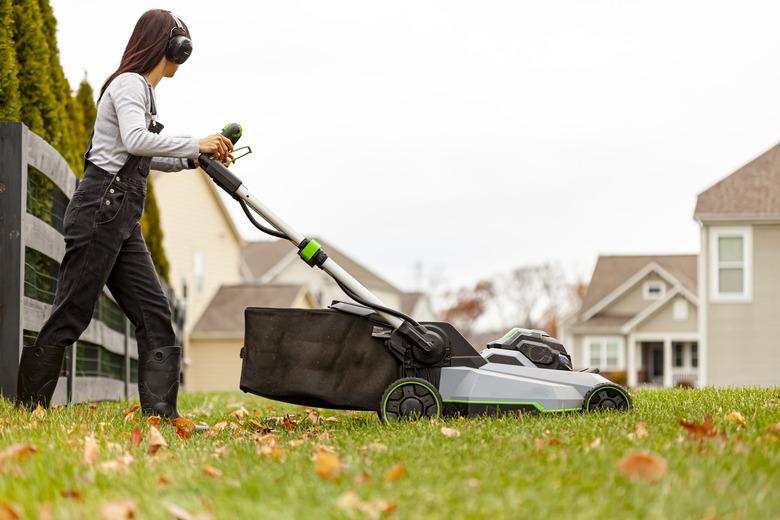Can You Cut Grass In Cold Weather?
There are few hard and fast rules for lawn mowing. Different grasses flourish at different times of year, experiencing seasonal growth spurts in response to either warm or cold weather. During periods of rapid growth, grass should be cut routinely, regardless of the outdoor temperature. In other words, grass should be mowed when it needs it, not according to a schedule, thermometer, or calendar.
Cut Cool-Season Grasses
As the name implies, cool-season grasses grow best in cooler seasons of the year. Popular throughout the North, they flourish in the spring and fall, where they often remain green beneath the winter snow.
Despite their affinity for cool weather, do not mow these grasses when they are covered in snow or frost. In fact, mowing should cease just before the first frost. Wait for the ice to melt before trimming the grass blades to avoid damaging the fragile plant tissues.
Cool-season grasses, including fescues and Kentucky bluegrass, also have a tendency to turn brown during periods of hot, dry weather. Do not mow the lawn in the summer until the grass turns green and begins to grow again. Allow the lawn to reach at least 4 inches in height before trimming, as this will help protect the roots from burning.
Mow Warm-Season Grasses
Warm-season grasses thrive in the warmest seasons in warm climates. Common throughout the South, warm-season grasses grow most actively during the sultry days of summer, displaying a rich, green color even when exposed to high heat, endless sun, and periodic drought.
Yet warm-season grasses need periods of dormancy too, going dormant during periods of cold weather. That means that they generally do not need to be mowed once the daily high temperature drops below 50 degrees Fahrenheit.
Care of Native Grasses
Native grasses, such as buffalo grass, prairie grass, and blue grama grass, create tough, drought-tolerant lawns that prosper under difficult conditions. Some native grasses grow so gradually they never need to be mowed at all. Others may require a periodic trim — one in the early summer and another in early fall.
These slow growers may take a few weeks to germinate, but once they are established, native grass lawns are virtually maintenance free, requiring neither irrigation nor fertilization. They are also tolerant of extreme temperatures, and some can withstand summer highs of up to 120 degrees Fahrenheit and winter lows down to negative 40 degrees.
Mowing Tips for All Grass
Regardless of grass type, set the blade on the mower so that it removes no more than one-third of the current growth. Cutting the grass too short stresses the plants and weakens the root system, resulting in thin, weedy lawns.
Sharpen the mowing blade regularly during mowing season. You can get your own sharpener or take your mower in for service. A dull blade tears the grass, rather than cutting it cleanly, causing the lawn to look ragged and shaggy. During periods of rainy weather, wait for the grass to dry before mowing. Damp grass clings to the mower blades, and soft, wet soil is easily damaged by heavy equipment.
